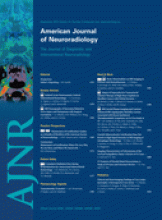Abstract
BACKGROUND AND PURPOSE: Children born preterm are at risk for adverse outcome, including visual impairment. We examined the relationship between neonatal DTI and sVEP in children born preterm to determine whether visual outcomes are related to early measurements of brain microstructure.
MATERIALS AND METHODS: Subjects were born at <34 weeks gestation and imaged before term-equivalent age. DTI fiber tracking was used to delineate the optic radiations and measure tract-specific average FA, Dav, and parallel and transverse diffusivity. Visual-evoked response amplitudes were measured as a function of spatial frequency, contrast, and vernier offset size with sVEP at 6–20 months after birth. The association between DTI and sVEP was assessed by using the Spearman correlation coefficient and linear regression for repeated measures.
RESULTS: Nine children with 15 scans were included. The peak response amplitudes for spatial frequency sweeps were associated with increasing FA and decreasing Dav and transverse diffusivity (P ≤ .006) but not with parallel diffusivity (P = 1). There was only modest association with the swept contrast condition and no detectable association with the vernier offset sweeps.
CONCLUSIONS: Microstructure of the optic radiations measured shortly after birth is associated with quantitatively measured responses elicited by moderate-to-high contrast spatiotemporal gratings in infancy. These findings are in keeping with studies showing a relationship between brain microstructure and function. While the clinical impact is not known, quantitative neuroimaging of white matter may ultimately be important for predicting outcome in preterm neonates.
Abbreviations
- BSID
- Bayley Scales of Infant Development
- cpd
- cycles per degree
- Dav
- mean apparent diffusion coefficient
- DTI
- diffusion tensor imaging
- FA
- fractional anisotropy
- IVH
- intraventricular hemorrhage
- MRI
- MR imaging
- NIH
- National Institutes of Health
- PVHI
- periventricular hemorrhagic infarct
- sVEP
- swept parameter visual-evoked potential
- WMI
- white matter injury
- Copyright © American Society of Neuroradiology
Indicates open access to non-subscribers at www.ajnr.org












